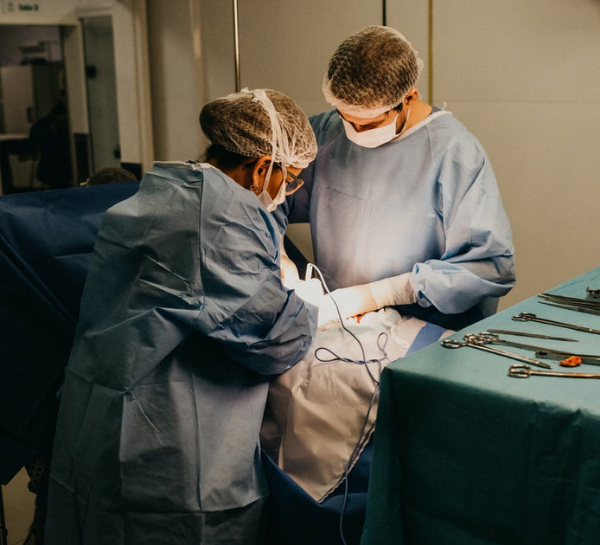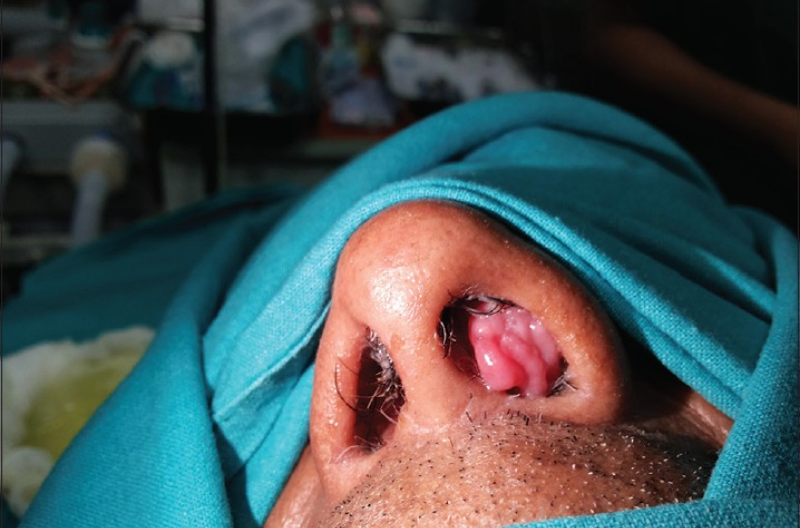Nasal papilloma is a benign epithelial tumor of the nasal cavity that mainly affects men between 40 and 60. Although the actual cause is unknown, human papillomavirus infection, chronic sinusitis, and smoking are the common risk factors for nasal papillomas.
Moreover, nasal papillomas, although benign, are locally aggressive, have a malignant potential, and have a high recurrence rate if not completely removed. Continue reading and learn more about nasal papillomas.
What is nasal papilloma
Nasal papillomas are benign tumors that develop in the mucus lining the nose or the paranasal sinuses, four air-filled cavities surrounding the nasal cavity beneath, above, and between the eyes. These tumors, which grow inward toward the bone in fingerlike projections, affect about two people in 100,000 and are most common in middle-aged men. The etiology of nasal papillomas is unknown; however, there is some evidence that the human papillomavirus (HPV) plays a role.
Inverted papilloma is a benign epithelial growth in the underlying stroma of the nasal cavity and paranasal sinuses.
Symptoms of nasal papilloma

Many nasal papillomas do not cause symptoms and are identified by chance during an assessment for another problem. Patients who report symptoms generally have nasal congestion or blockage, discharge or post-nasal drip, nose bleeds, a loss of smell, or face discomfort.
How do you get rid of nasal papillomas
The tumor will not heal on its own, and it may cause harm to the surrounding tissue and bone over time. Nevertheless, you can treat nasal papilloma through surgical removal. Endonasal endoscopy is an effective treatment for most cases.
💉 Inverted papilloma must be treated. The tumor will not go away on its own, and over time it may cause damage to the surrounding bone and tissue. Surgical removal is the only option. Endonasal endoscopy is a very effective treatment for most cases.
What causes nasal papilloma
A nasal papilloma develops when a genetic mutation transforms normal, healthy cells into malignant ones. Healthy cells create and replicate at a predictable rate before dying at a known period. Abnormal cells proliferate and replicate uncontrollably and do not die—the abnormal cells accumulate to form a mass (tumor).
If the abnormal cells develop into malignant cells, they may infiltrate neighboring tissues and detach from the primary tumor, causing it to spread (metastasize) to other body regions.
Risk factors
The following factors may increase the risk of nasal papilloma:
- Breathing in air pollution
- Smoking and being in the environment of smokers
Nasal papilloma treatment

The mainstay of therapy for nasal papilloma is the surgical removal of the lesion. It is essential to consult with a skilled surgeon to avoid recurrence. Nasal papillomas are known to reoccur at a high incidence if they are not entirely removed. Endoscopic resection is the most common method of doing surgical resection.
If any worrisome signs emerge following surgical resection, such as the growth of what may be a malignant tumor, patients might need even more significant surgery or other treatments such as radiation therapy or chemotherapy.
Should you worry about nasal papilloma
🔔 Papillomas are noncancerous, outward-growing lumps that might cause problems in some locations. They do not spread and are not aggressive. However, be sure to receive a clinical opinion on any lump or skin lesion.
Nasal papillomas are malignant in and of themselves; they have been related to increased cancer risk. For example, women who have had treatment for several breast papillomas may be subjected to ongoing surveillance if cancer develops.
Moreover, nasal papillomas are outward-growing tumors that might cause problems in some areas. They can also be aggressive if left untreated.
Be sure to see a doctor if you have any lesions. The importance of intervening early when a lump turns out to be a more severe sort of lump cannot be overstated:
The fact that papillomas might create issues or pain and that these problems may need additional treatment, despite being unlikely to be malignant or life-threatening, is another reason to seek medical care.
What should you do to stop a papilloma from becoming cancerous

It is difficult to prevent a papilloma from developing into cancer since HPV cancer generally does not manifest itself until it has progressed to an advanced stage. Also, the majority of HPV malignancies are not detectable by screening. However, there is an HPV vaccine available to prevent infection.
Regular cervical cancer screening is essential for women to detect and treat the disease as early as possible before the HPV virus progresses to cancer.
There is now no method to predict which individuals who have HPV may develop cancer or other health issues in the future. It is possible that people with weakened immune systems, such as those who have HIV, may be less able to fight against HPV and will be more likely to suffer health issues due to it.
One of the best ways to help prevent HPV and HPV-related cancers is to get the HPV vaccine. The vaccine protects you from most types of high-risk HPV (the kinds of HPV that can cause cancer). Some vaccine brands also protect you from the kinds of HPV that cause genital warts.
How can I prevent HPV-related cancers?
Malignancies of the cervix, vulva, vagina, penis, and anus are among the HPV-related cancers. Additionally, HPV infection has been linked to throat cancer at the base of the tongue and tonsils, among other places.
Nevertheless, maintaining a healthy lifestyle is the most effective method of combating sickness.
Comment below to share your thoughts and don’t miss our blog on the benefits of chelated zinc.

